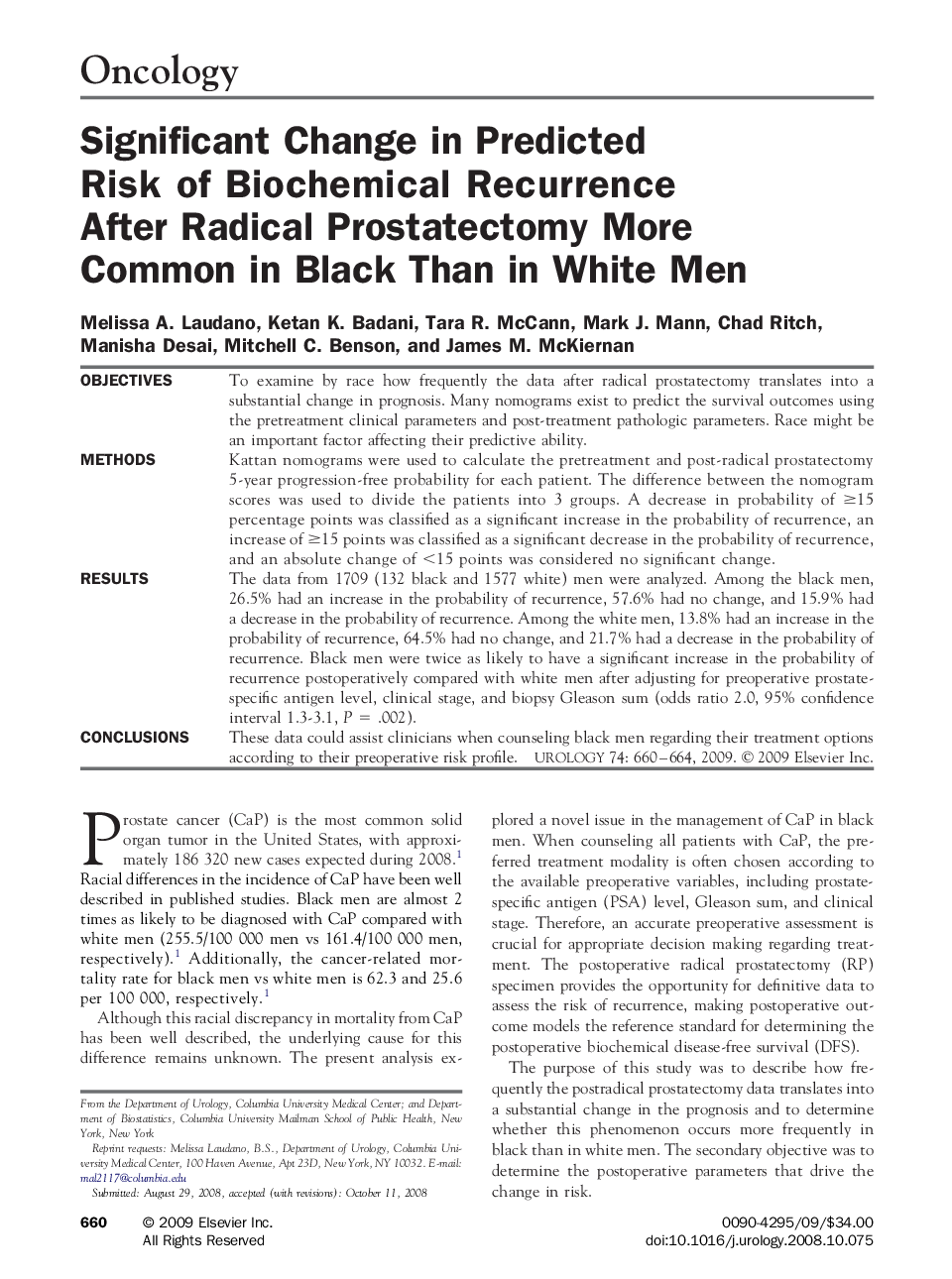| کد مقاله | کد نشریه | سال انتشار | مقاله انگلیسی | نسخه تمام متن |
|---|---|---|---|---|
| 3904084 | 1250386 | 2009 | 5 صفحه PDF | دانلود رایگان |

ObjectivesTo examine by race how frequently the data after radical prostatectomy translates into a substantial change in prognosis. Many nomograms exist to predict the survival outcomes using the pretreatment clinical parameters and post-treatment pathologic parameters. Race might be an important factor affecting their predictive ability.MethodsKattan nomograms were used to calculate the pretreatment and post-radical prostatectomy 5-year progression-free probability for each patient. The difference between the nomogram scores was used to divide the patients into 3 groups. A decrease in probability of ≥15 percentage points was classified as a significant increase in the probability of recurrence, an increase of ≥15 points was classified as a significant decrease in the probability of recurrence, and an absolute change of <15 points was considered no significant change.ResultsThe data from 1709 (132 black and 1577 white) men were analyzed. Among the black men, 26.5% had an increase in the probability of recurrence, 57.6% had no change, and 15.9% had a decrease in the probability of recurrence. Among the white men, 13.8% had an increase in the probability of recurrence, 64.5% had no change, and 21.7% had a decrease in the probability of recurrence. Black men were twice as likely to have a significant increase in the probability of recurrence postoperatively compared with white men after adjusting for preoperative prostate-specific antigen level, clinical stage, and biopsy Gleason sum (odds ratio 2.0, 95% confidence interval 1.3-3.1, P = .002).ConclusionsThese data could assist clinicians when counseling black men regarding their treatment options according to their preoperative risk profile.
Journal: Urology - Volume 74, Issue 3, September 2009, Pages 660–664